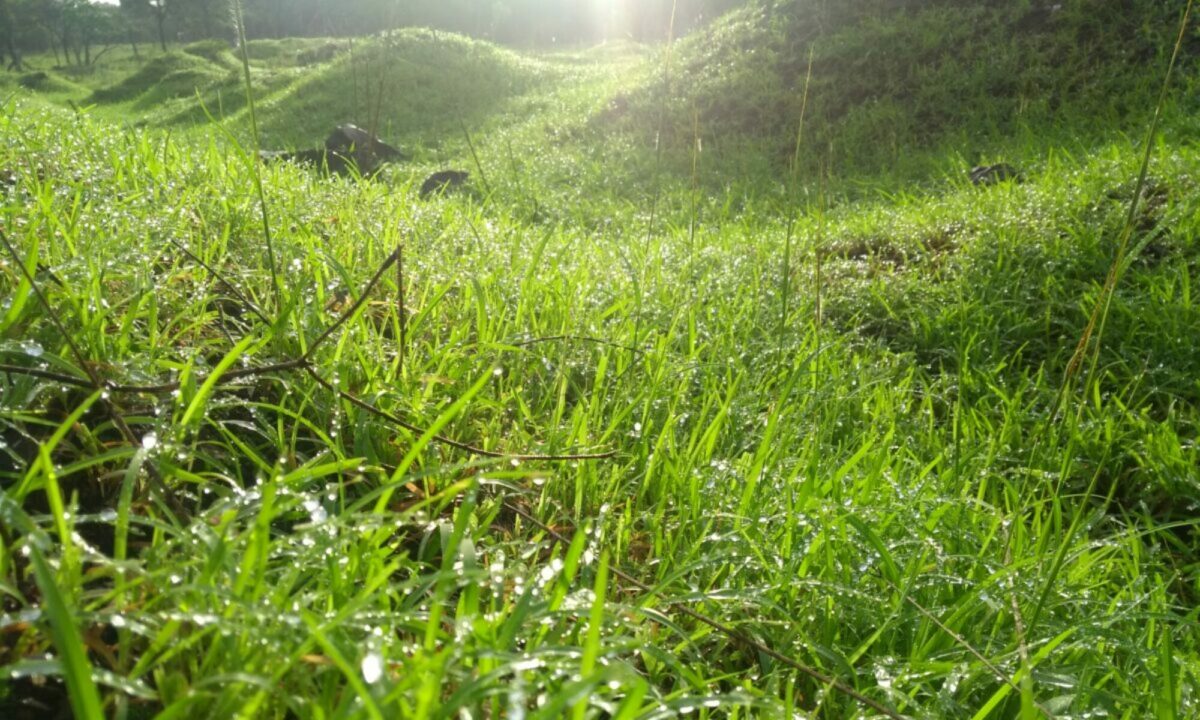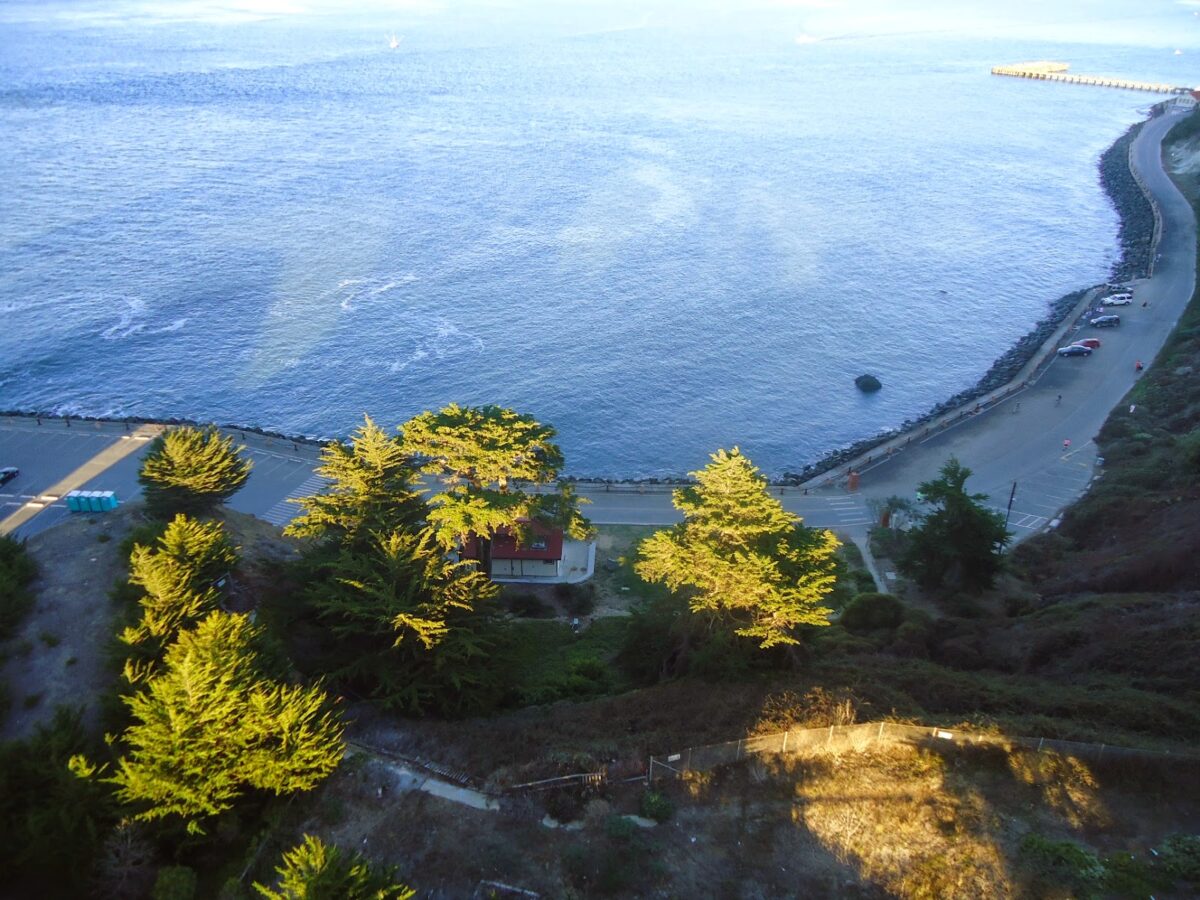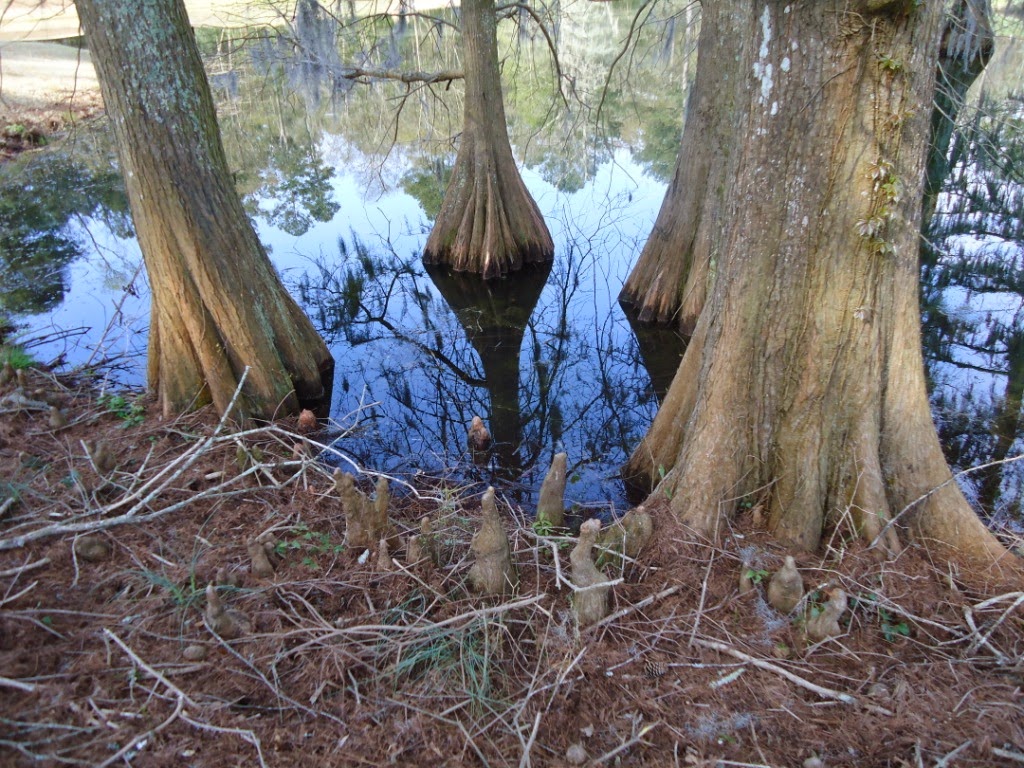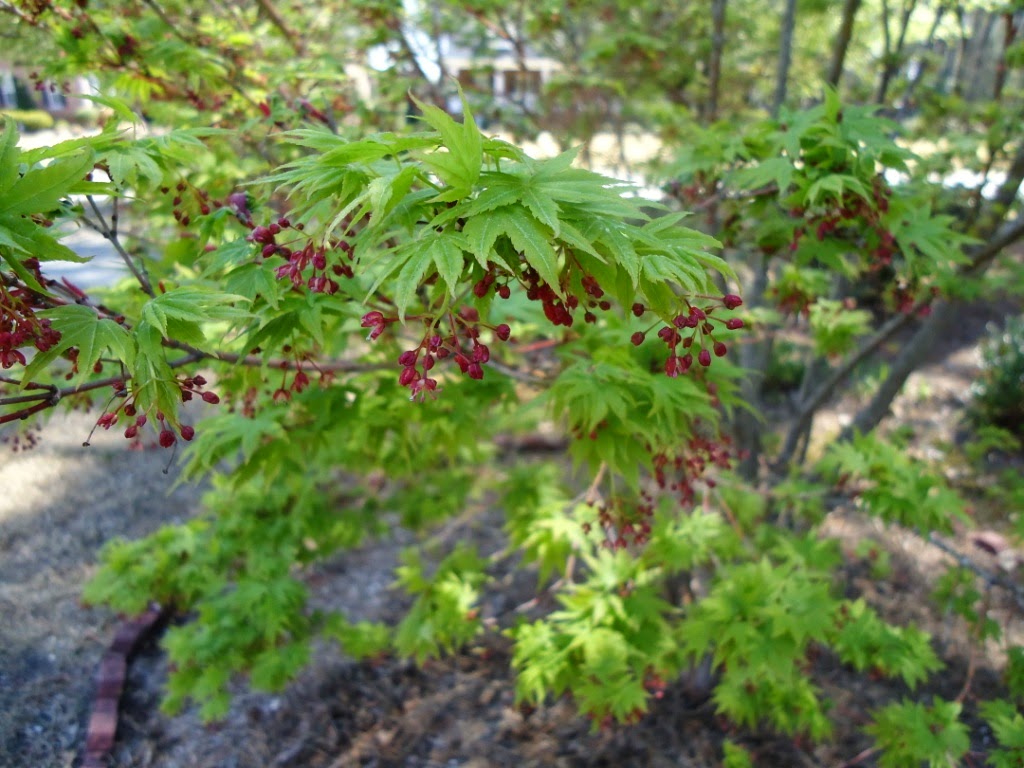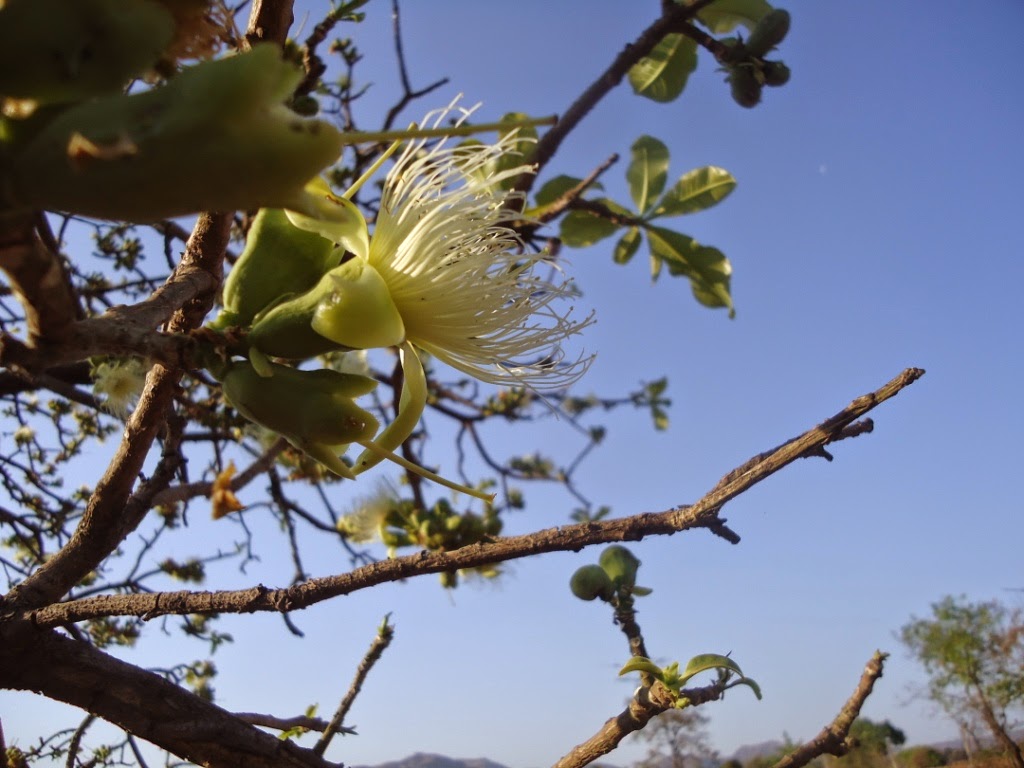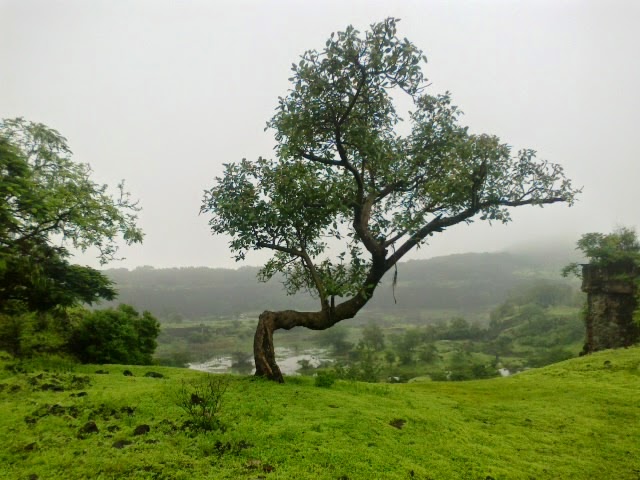 |
| Raindrops |
Sunkissed (Wordless Wednesdays)
Roots
Yet I find that tree roots too have emerged as attention grabbers. Roots are what anchor a tree to the ground, collect water and other nutrients from the soil, at times are modified to breathe/give support as well. I would like to share some of these amazing roots with you.
Enjoy…
These are simply stunning. Tree roots at Angkor Wat. Do they support these ancient structures or do they damage the structure? To me it looks like the former!
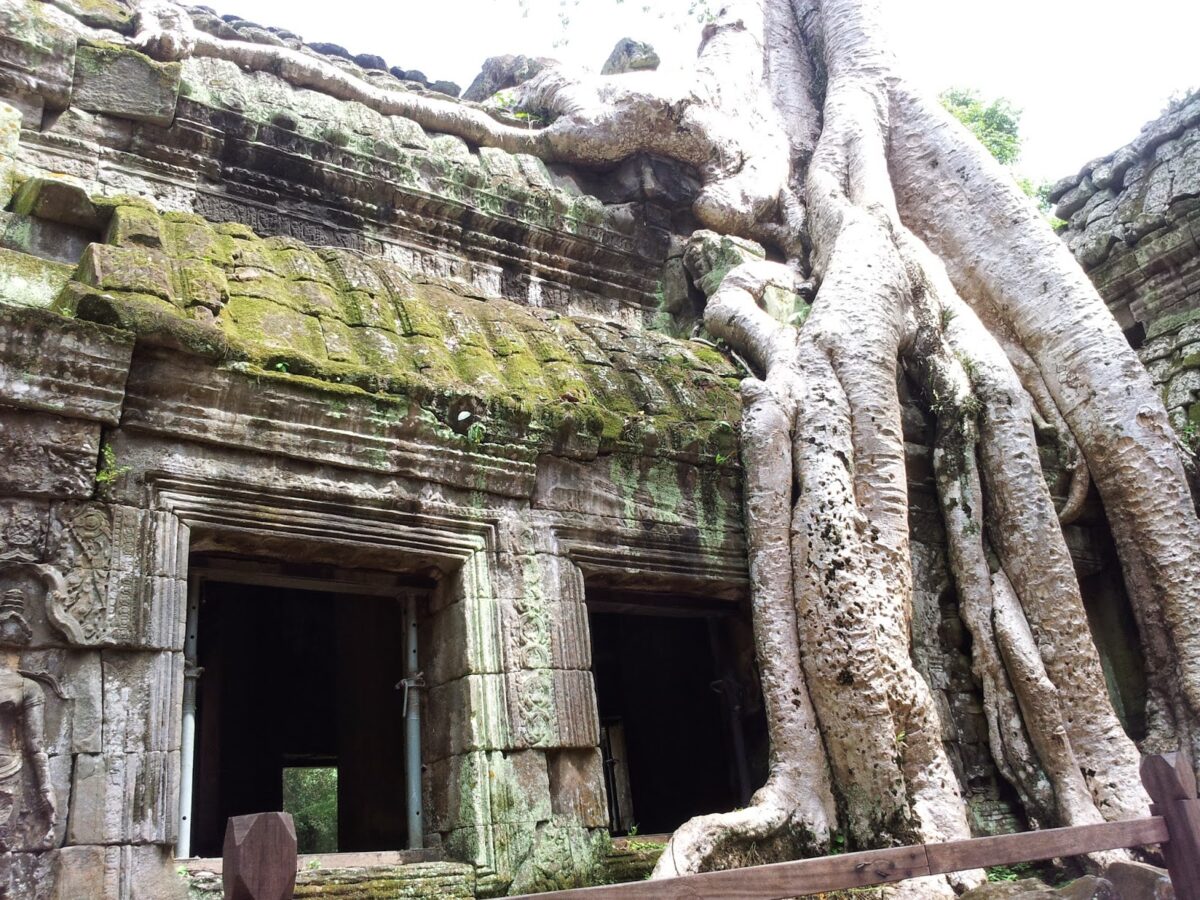 |
| Photo Credit: Col (Dr) Ram Athavale, Retd |
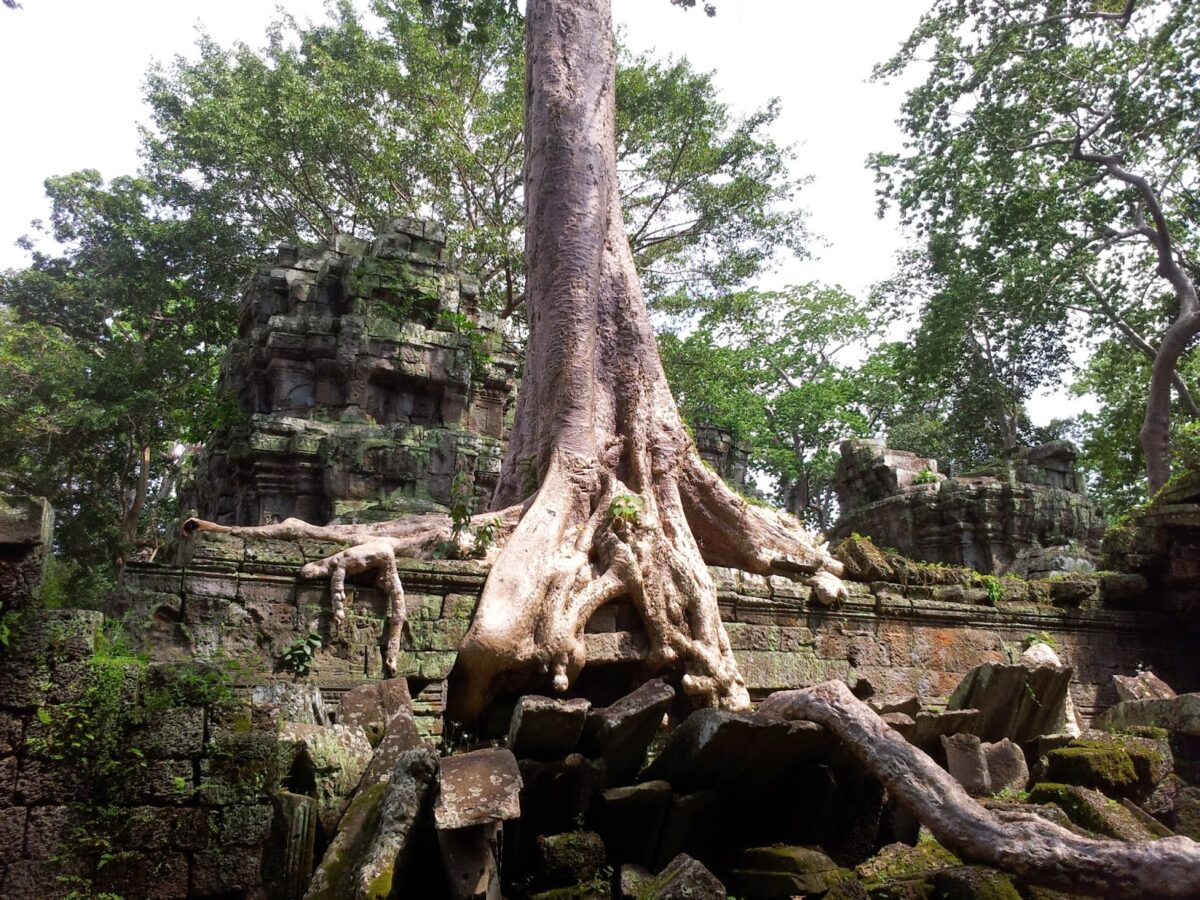 |
| Photo Credit: Col (Dr) Ram Athavale, Retd |
Here is yet another example of roots offering some support… in the form of a bridge! This bridge has been created by living roots of the Ficus tree. Such bridges are seen in North East India. This photo has been sourced from Getty Images
Artist Steve Robin has envisaged and created the following bronze sculpture using inspiration of the roots of the large sycamore tree in the St Paul’s Chapel in New York that was damaged due to debris from the 9/11 World Trade Tower collapse. Read more about it here.
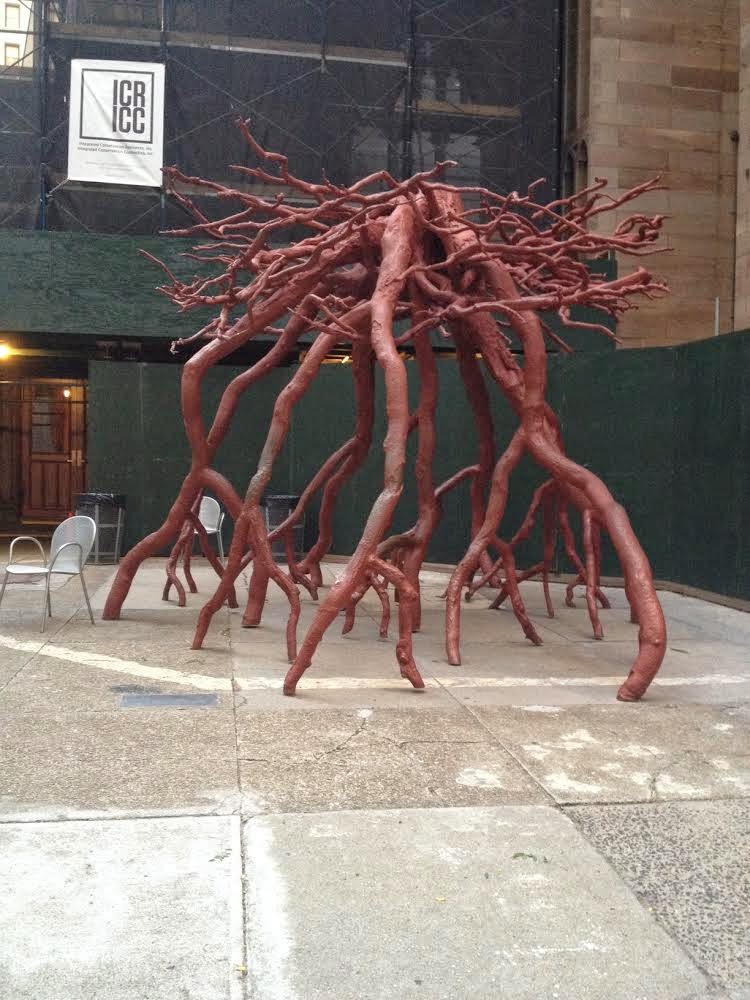 |
| ‘Trinity Root’ Patinated Bronze by Steve Tobin. Seen at St Paul’s Chapel, New York |
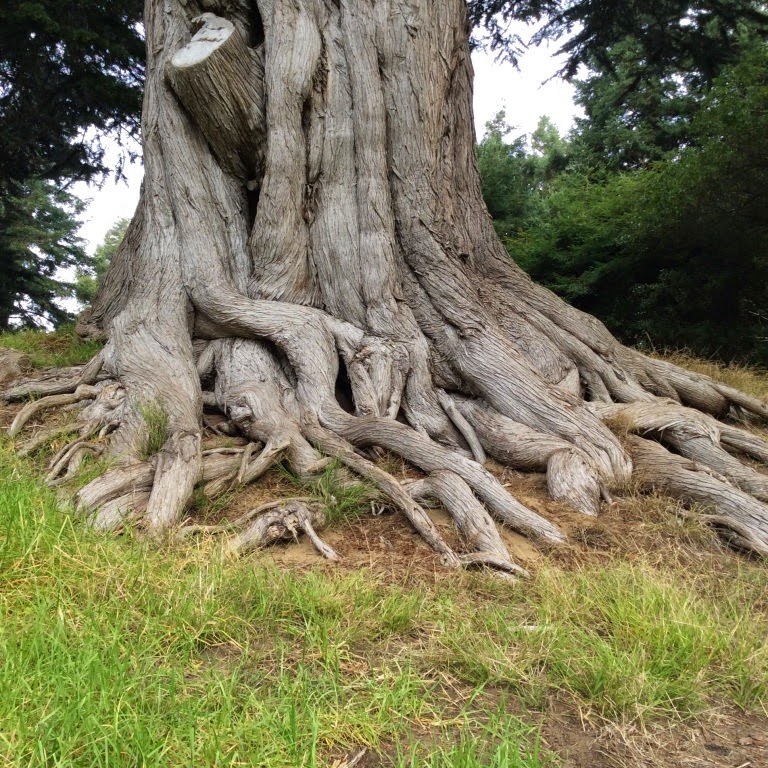 |
| Stunning roots of a huge Cupressus macrocarpa. Seen in San Francisco |
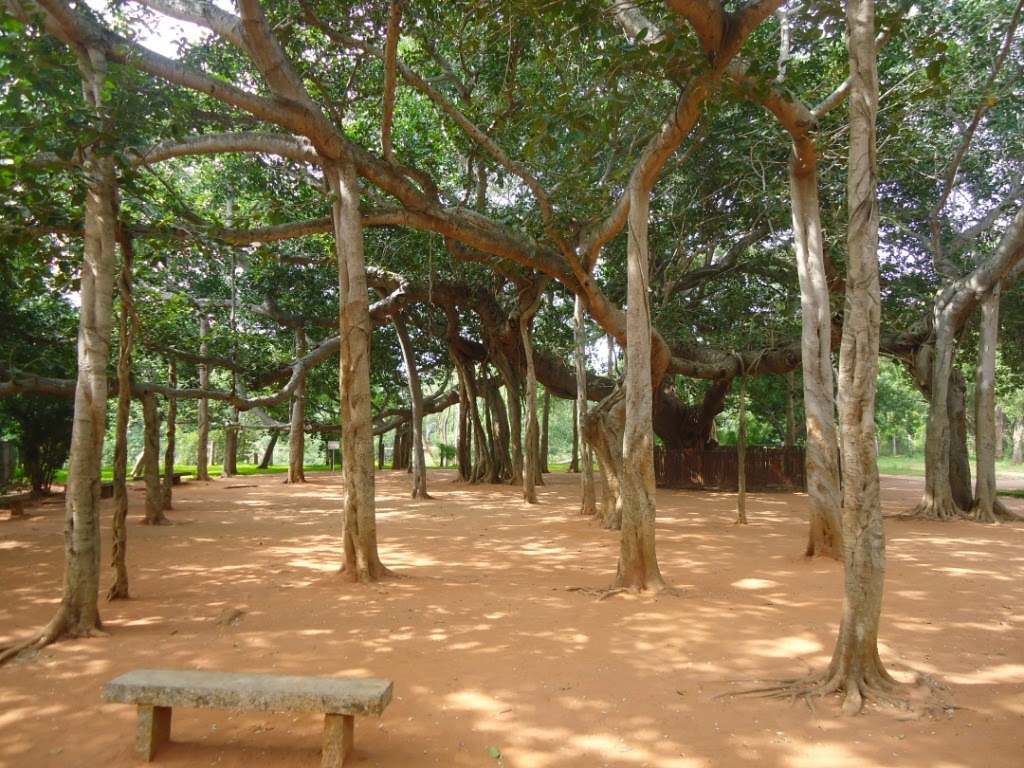 |
| Roots of this Ficus at Pondicherry have spread out to form columns. This tree is at Auroville, India. Photo Credit: @puneribaker |
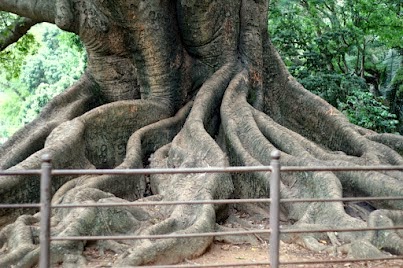 |
|
Rootage of a 200 year old Silk Cotton Tree seen at the Lal Bagh, Bangalore
Photo Credit: @puneribaker
|
|
The vertical Cypress
knees or Pneumatophores of the Taxodium distichum (Bald cypress) jut upwards from the soil. Some theories state they help the tree get oxygen but some trees have thrived even after the cypress knees were removed. Other theories propose that they play the role of supporting the tree.
|
| Cypress knees or Pneumatophores of the Taxodium distichum (Bald cypress). This image from South Carolina, USA |
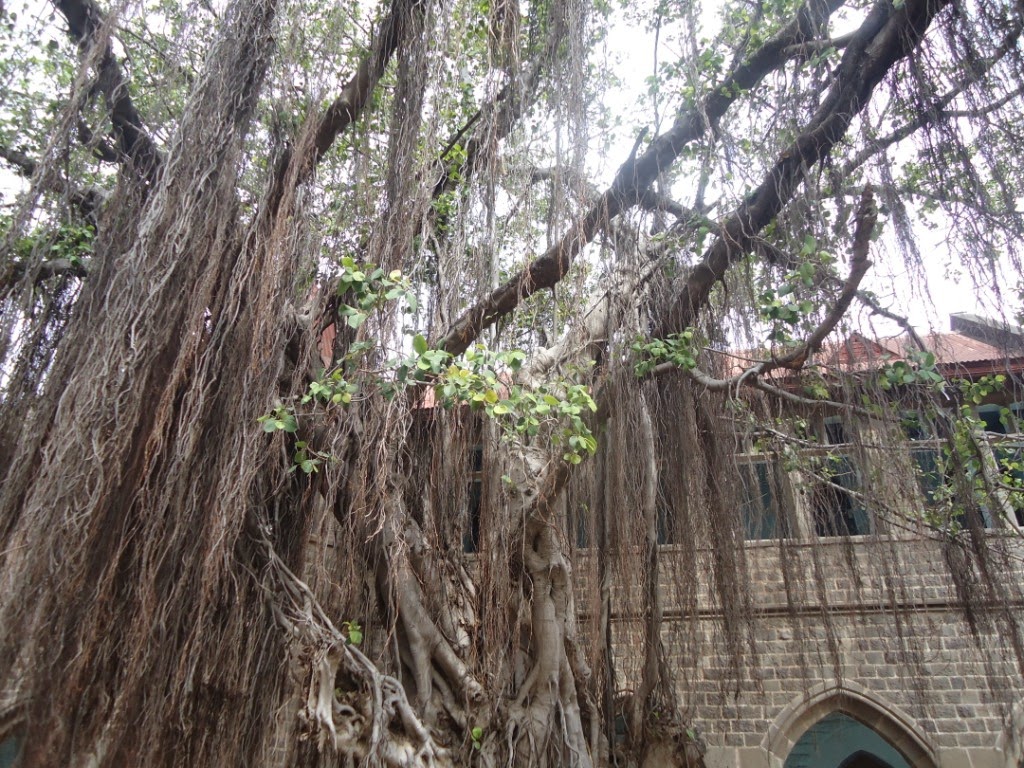 |
| Thin delicate aerial roots of the Ficus microcarpa, help distinguish it from other Ficus brethren whose aerial roots may be thicker and coarser. This tree is in Pune, India |
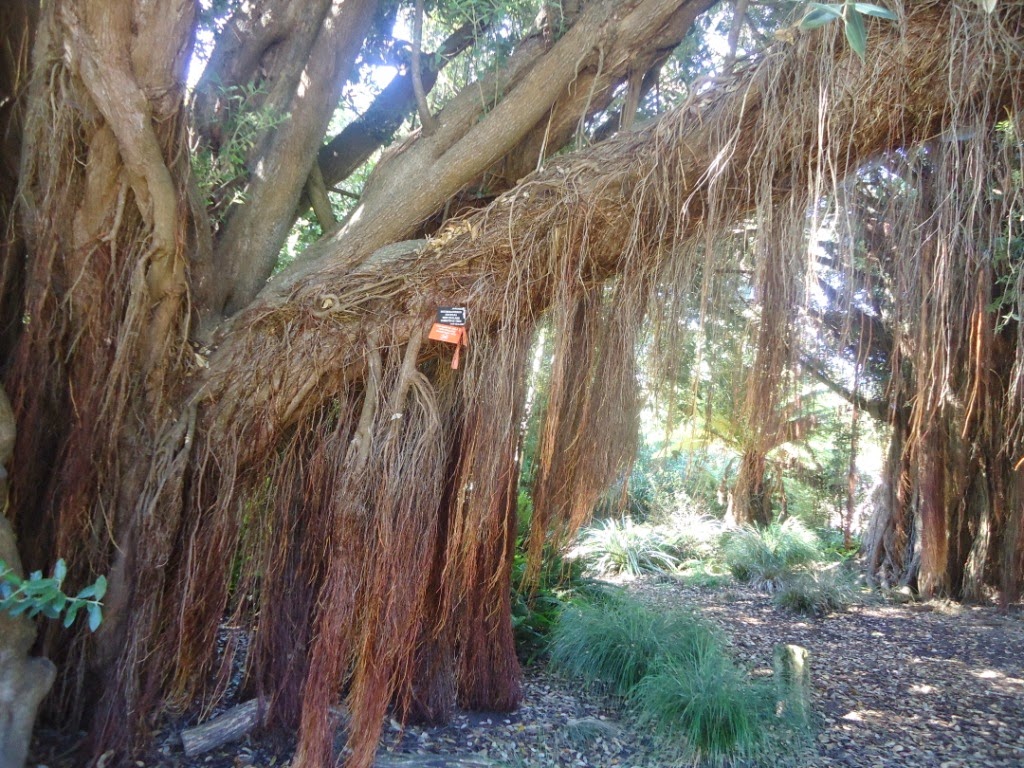 |
| This is mostly of learning value to me as I was under the wrong impression that only Ficus species produced aerial roots. This tree is the Metrosideros excelsa (New Zealand Christmas Tree) which belongs to the Myrtaceae family. This tree is from the San Fransisco Botanical Garden |
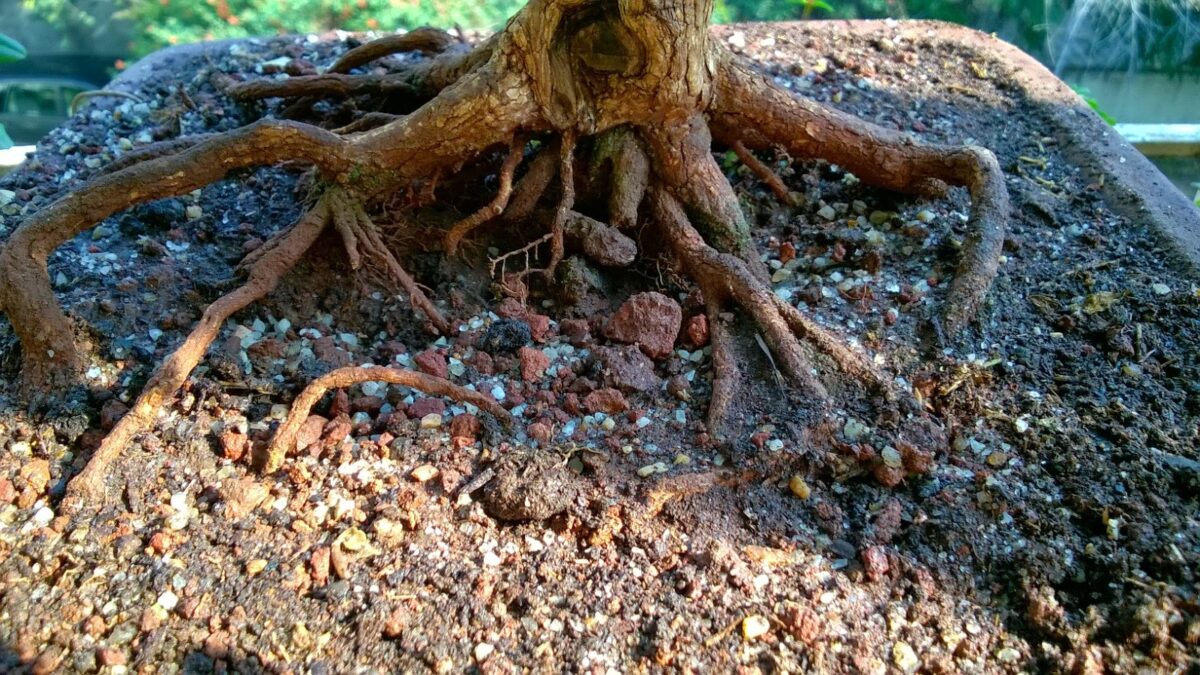 |
| Nebari of my Kamini bonsai! |
If you have enjoyed this, you are sure to like my post about amazing barks …
Take care!
Flowers and Leaves (Wordless Wednesdays)
Wild Guava (Wordless Wednesdays)
The Hills Are Alive
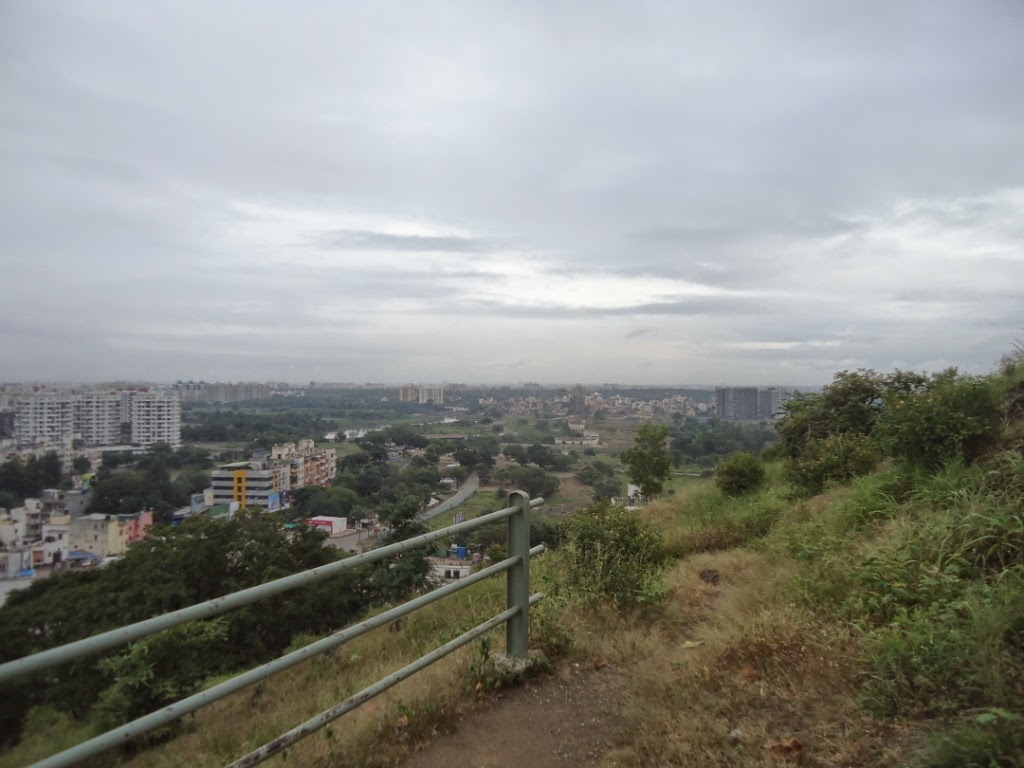 |
| The hill overlooks Baner and Pashan and one can see the city skyline stretching as far as the eye can see |
Any one who has been to these tekdis (hills) will totally agree with me. I had not visited the Baner Tukai tekdi and eagerly took up an opportunity to visit it.
Like most tekdis in Pune, this one too suffered from deforestation and must have been really bare. It has been the ceaseless and untiring efforts of Dr Garudkar and the Clean Earth Movement that is showing its fruits now. Here is a link to their website.The group has been active since 2006.
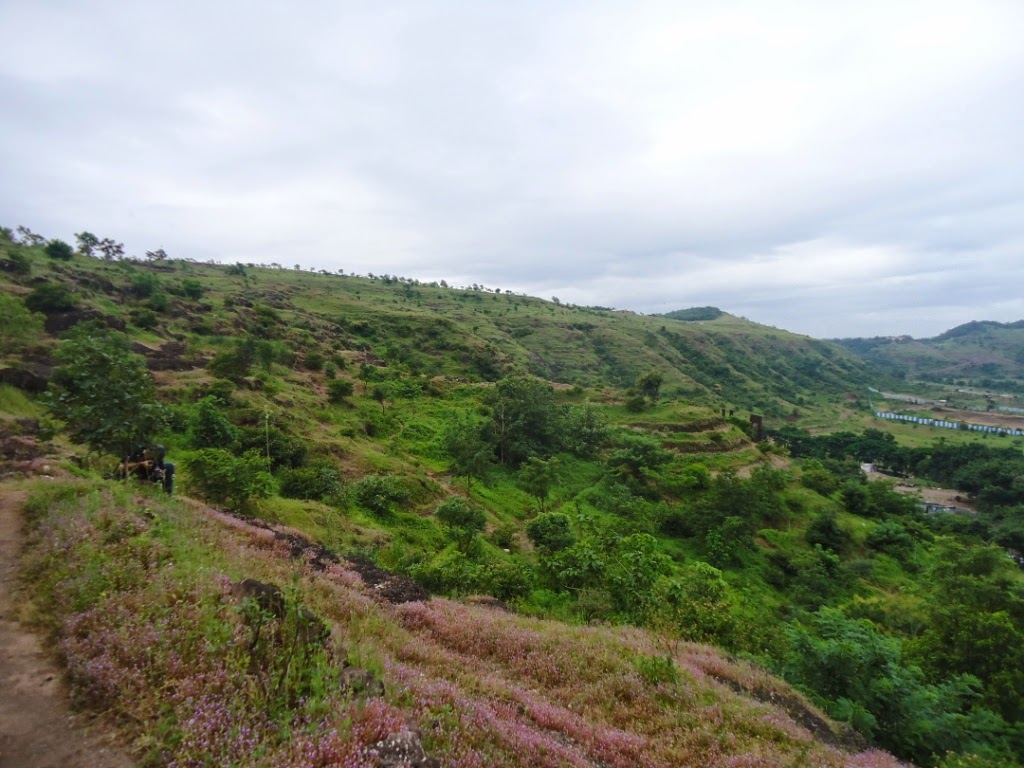 |
| The almost flat top is perfect for long walks |
The Baneshwar caves are located at the foot of the hill. As one ascends the steps one is immediately struck by the extent of the city’s growth, the spread of concrete jungle almost into the hills. Yet, look up and one can see the green flat top of the tekdi as it meanders away into the distance. Get off the steps and follow the foot trails to enjoy the greenery. The tekdi spans a vast area hence has been ‘divided’ into different sectors named after forests of Maharashtra. The naming is purely for the sake of convenience of the activists working there.
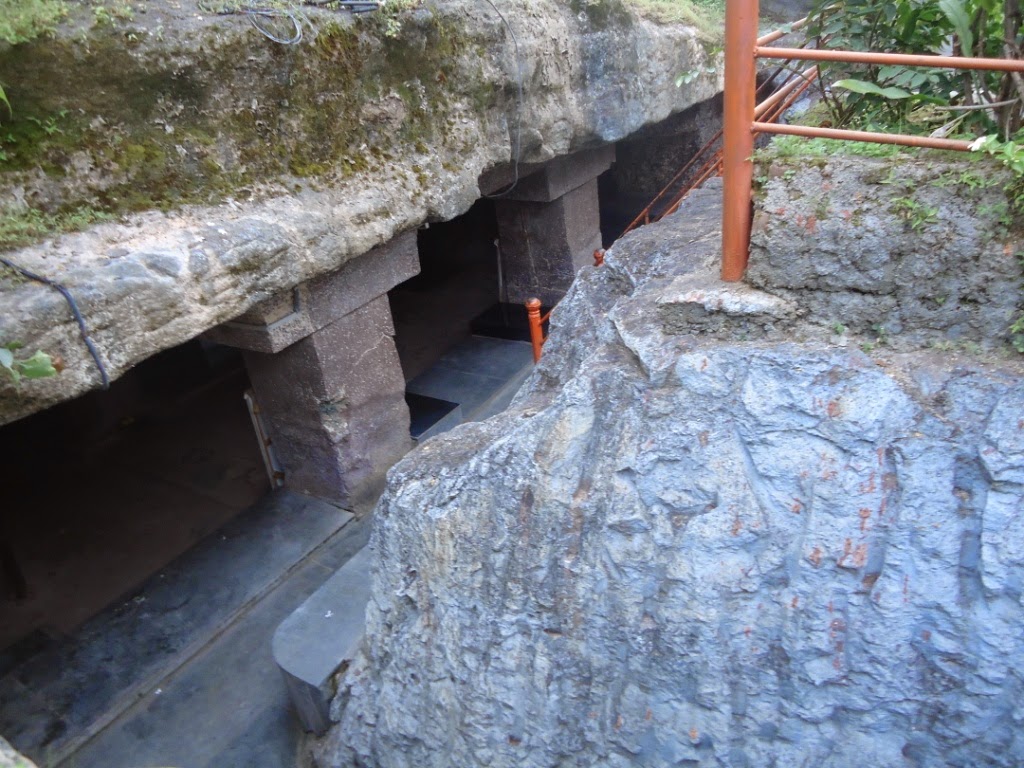 |
| These caves are located at the foot of the hill and have a Shiva temple |
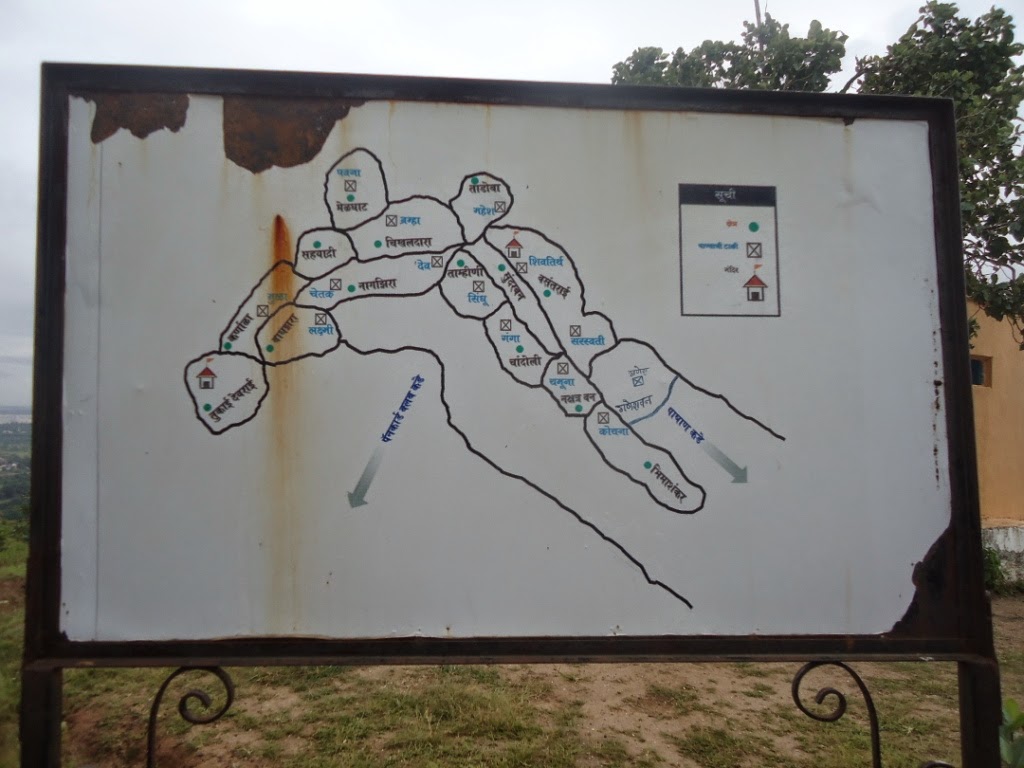 |
| The ‘map’ of the hill area |
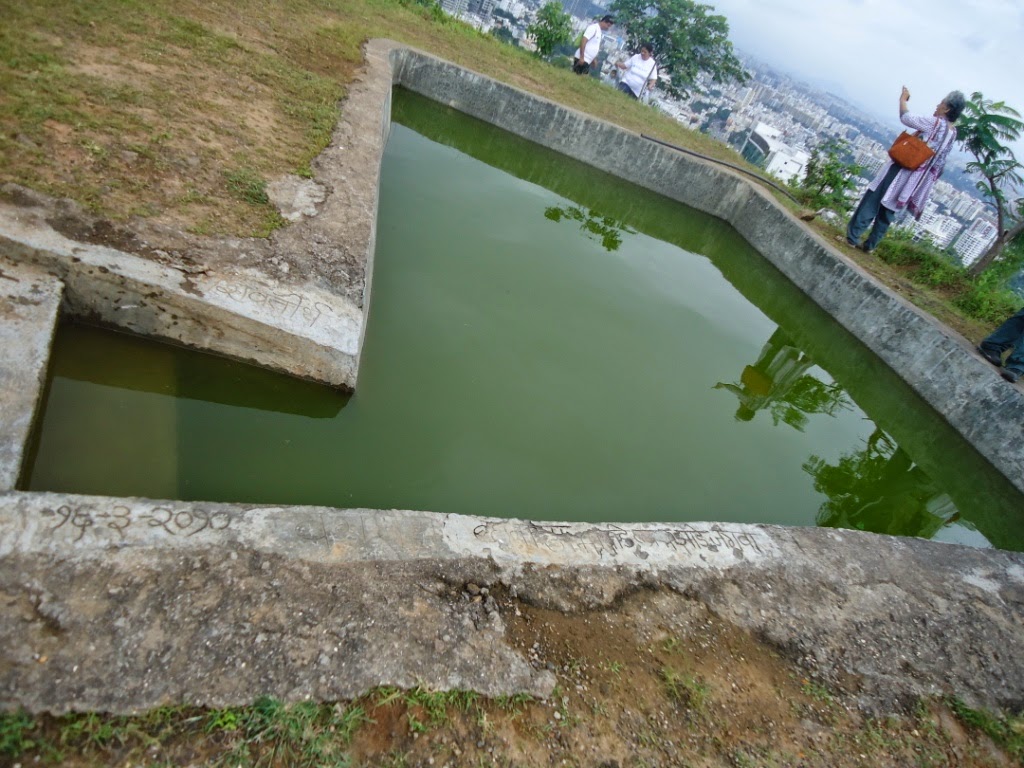 |
| The activists have built such tanks to store water for the trees. |
Here
are some highlights of the Baner Tukai tekdi. If you happen to live in
the area, do join the group and help nurture the trees, and keep the
‘lungs’ of the city healthy and green!
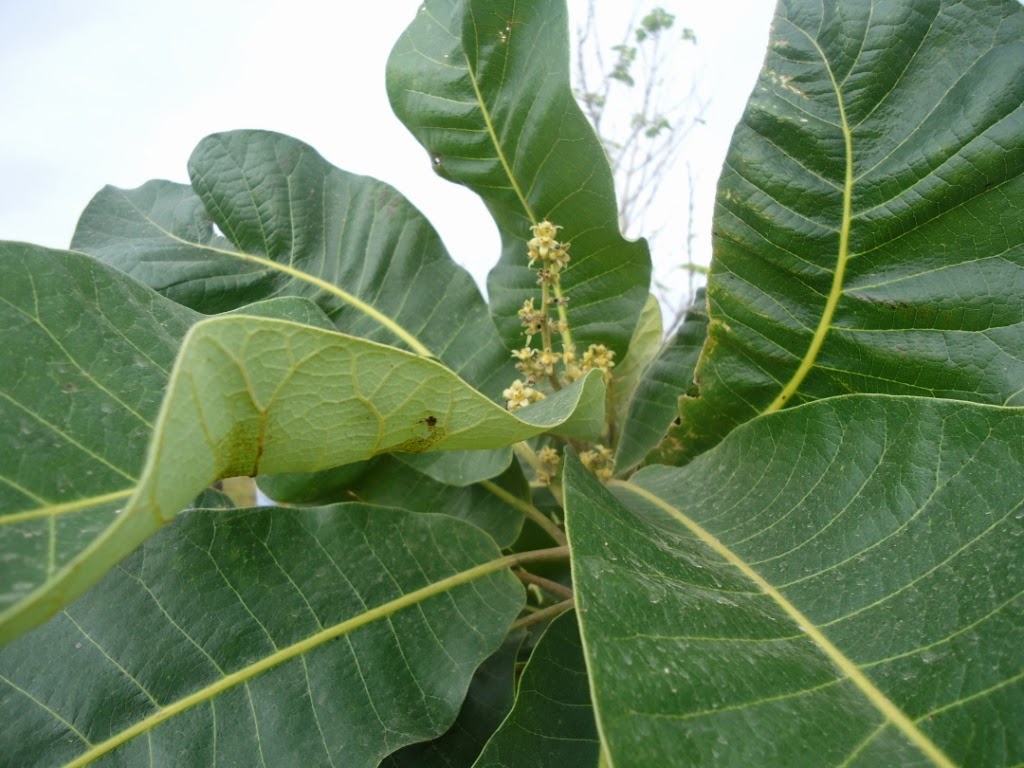 |
| This Bibba tree was flowering (Semecarpus anacardium) |
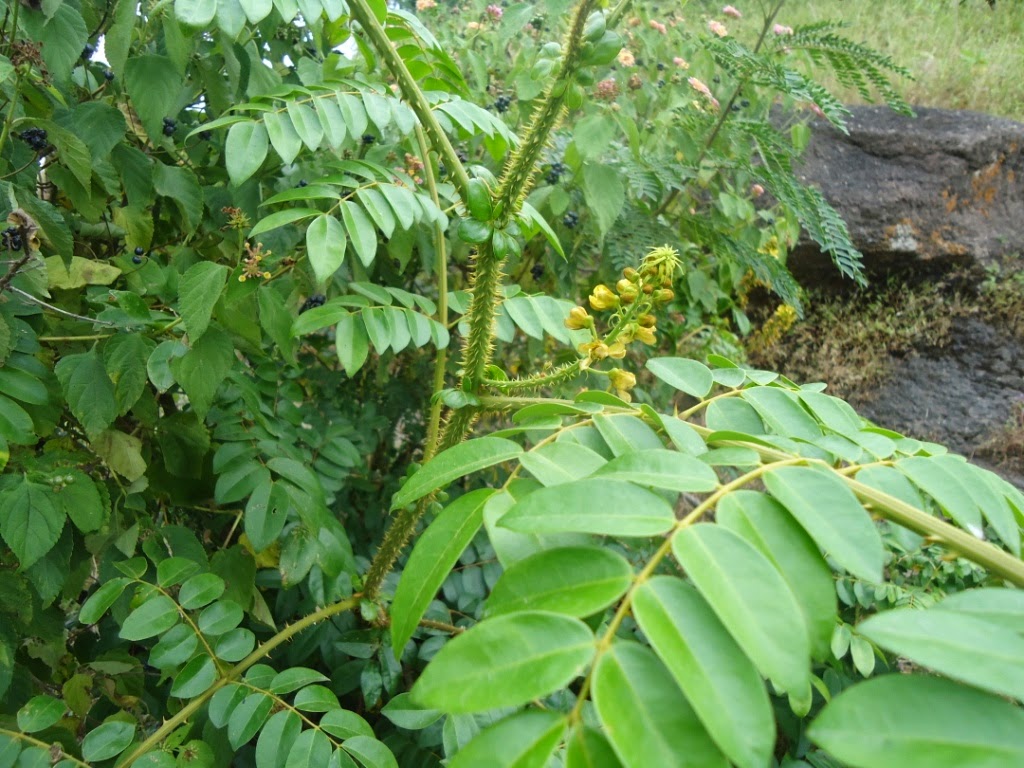 |
| Sagargota (Caesalpinia bonduc) inflorescence- the tree is armed with thorns on all parts |
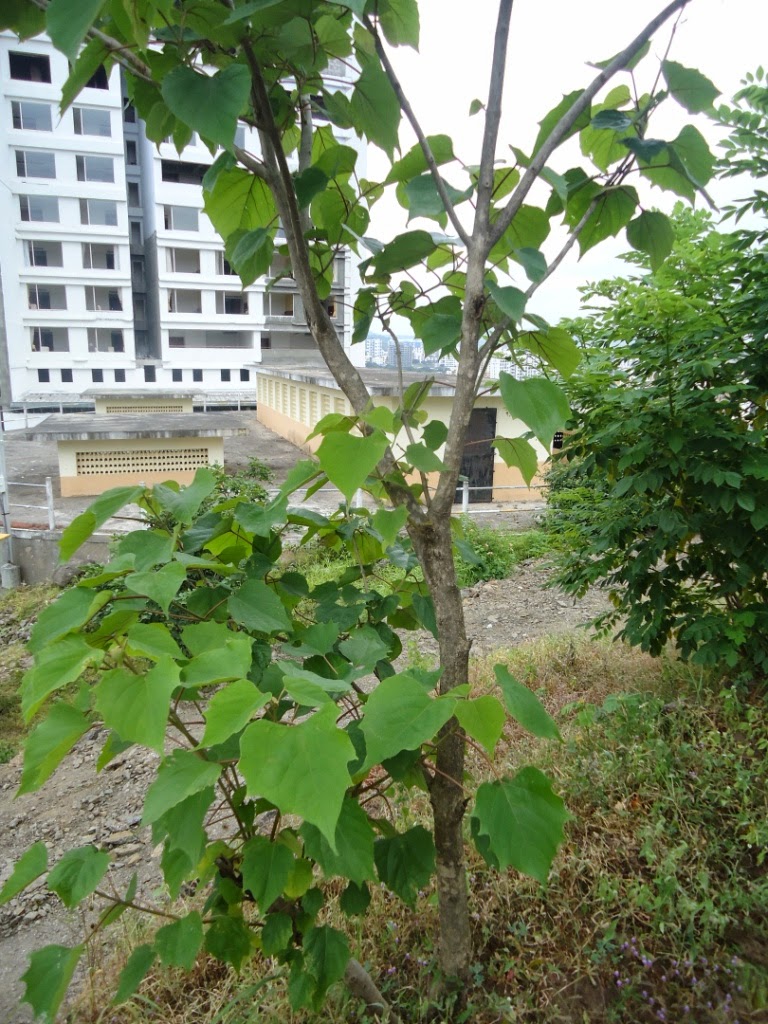 |
| Shivan (Gmelina arborea) was seen growing at many sites. |
Besides these, many other tree species had been planted and seemed to be pretty healthy. Some which I identified were several Ficus species, Neem, Arjun, Laxmi Taru (Simarouba glauca), varieties of Bauhinia, Prajakta, Awala, Waval.
The flowers that grabbed all our attention despite their small size (and by small I mean half a finger nail) were the seasonal herbs. They were in full bloom and created yellow and purple carpets on the hill side, almost reminiscent of the Kas Pathar. We saw Hyptis suaveolens (with Tulsi-like-fragrant leaves), Sida species, Trichodesma sp, Sopubia sp, Alysicarpus sp, Stryka sp, Sonchus sp and many many more that we could not identify. There were some lichens too!
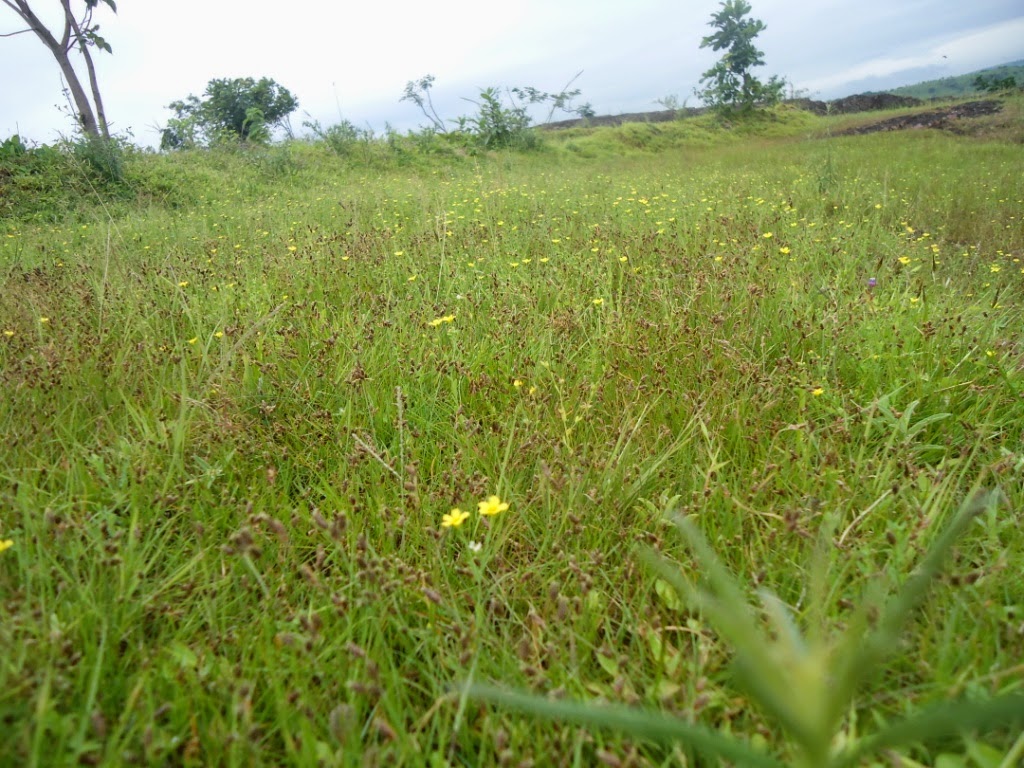 |
| Yellow Tribulus terrestris |
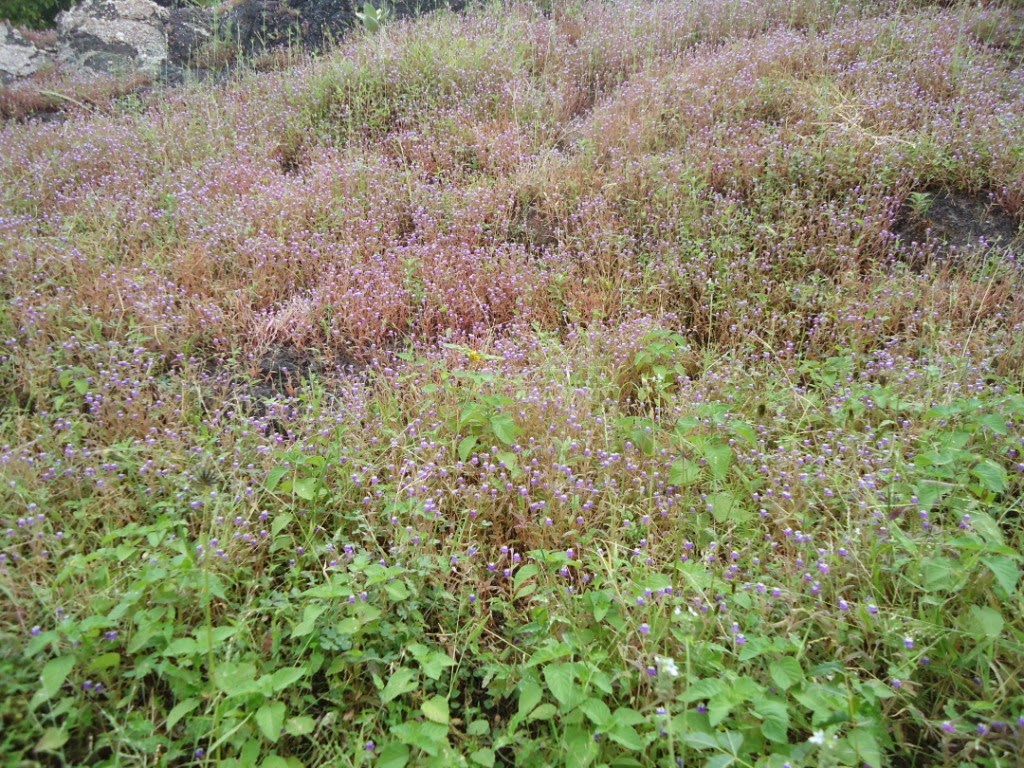 |
| A purple-pink carpet of Cyanotis species |
The hills in Pune are at their full glory right now. Go enjoy!
Tedious Yet Satisfying!
The Durva to be offered is the tender shoot of grass with only three terminal blades including the new shoot. Usually a bunch of 5,11 or 21 Durva are offered. Panicum dactylon, Imperata cylindrica, Desmostachya bipinnata and Cynodon dactylon are some grass species identified as sacred grass.
In bygone days, possibly each and every household had a garden or at least a place where people could visit to pluck Durva. So-called development in urban Indian cities has created a concrete jungle with almost no gardens. The only source for Durva is the market where one can buy bunches of grass, which cannot really be offered to the God. Ideally the grass should be sorted out, almost akin to picking out leaves from a bunch of Fenugreek leaves! Its not a good idea to think about the origins of the grass, who or what has walked over it. One can simply wash the ready Durva before offering it to Ganesh.
It took me almost four hours to sort a bunch of grass into Durva for offering.
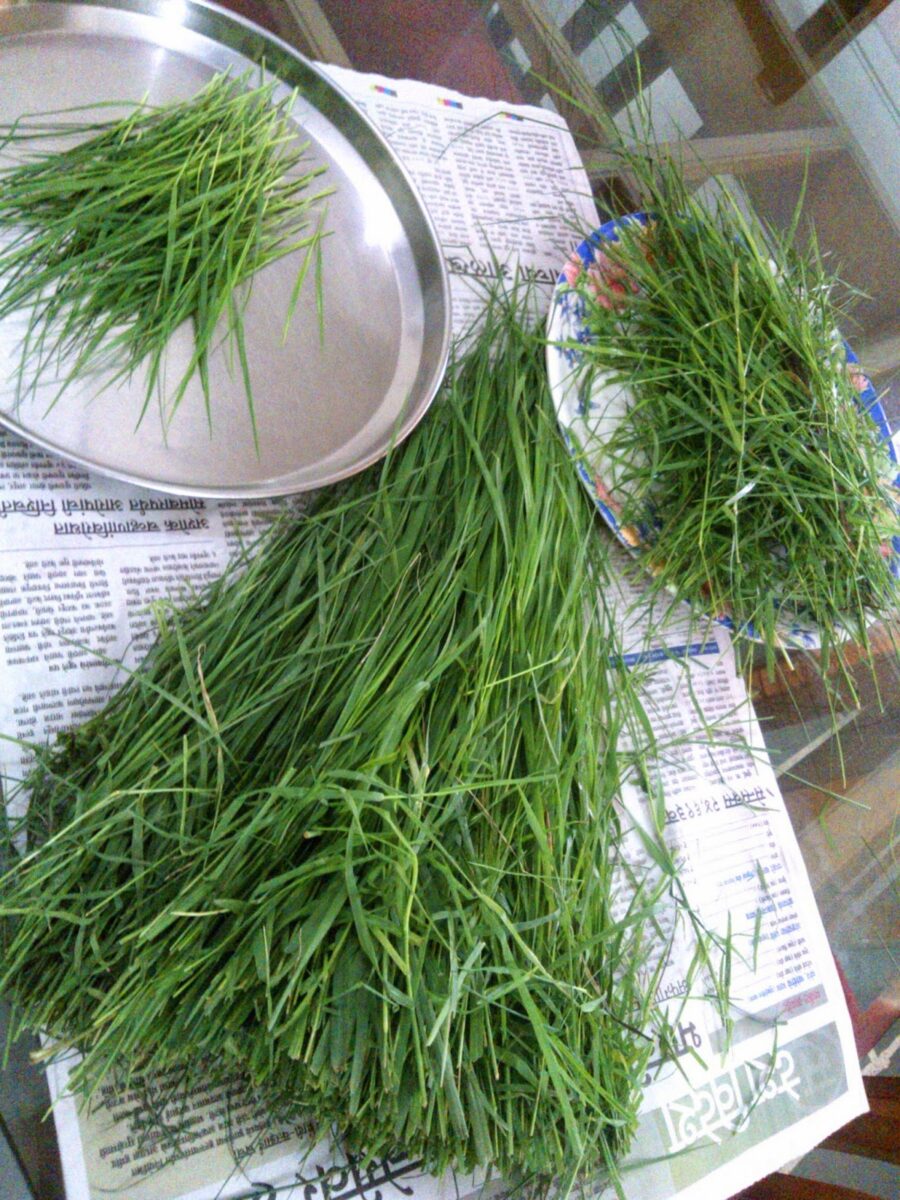 |
| Each Durva is carefully separated into a steel plate |
Each twig has to be carefully examined and cut out at the
correct spot (so only the terminal three shoots are present). At this
stage the twig must be handled very carefully else a blade may break off
which means the Durva cannot be used.
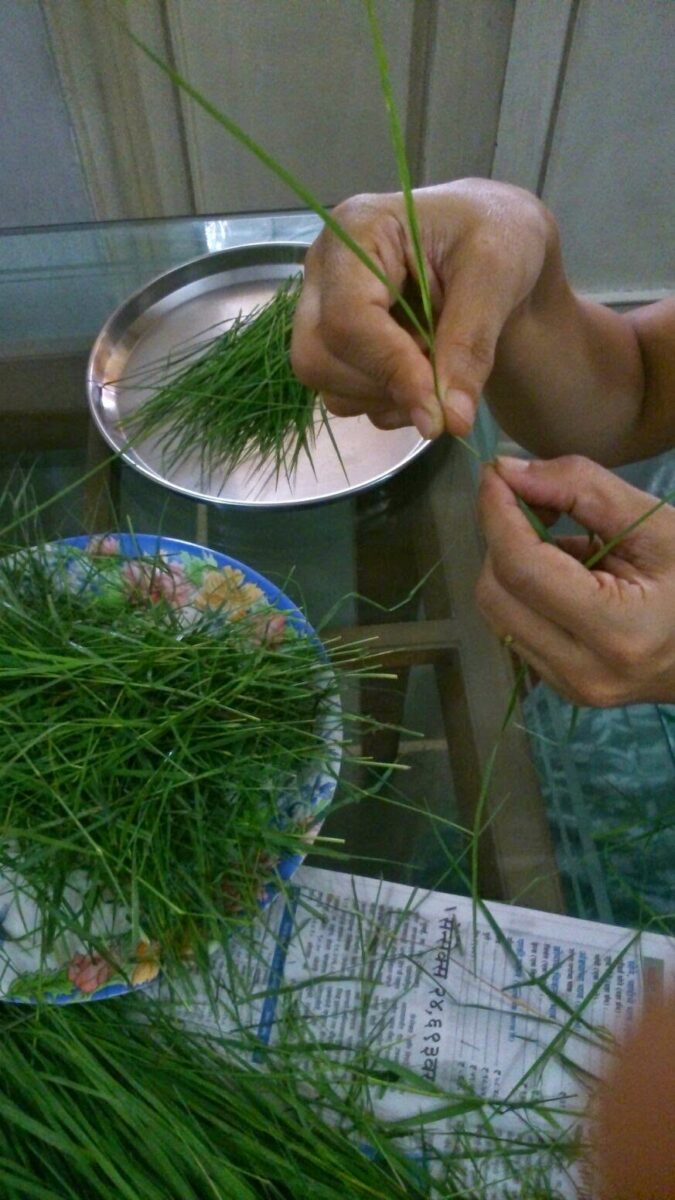 |
| Each twig of grass is assessed. |
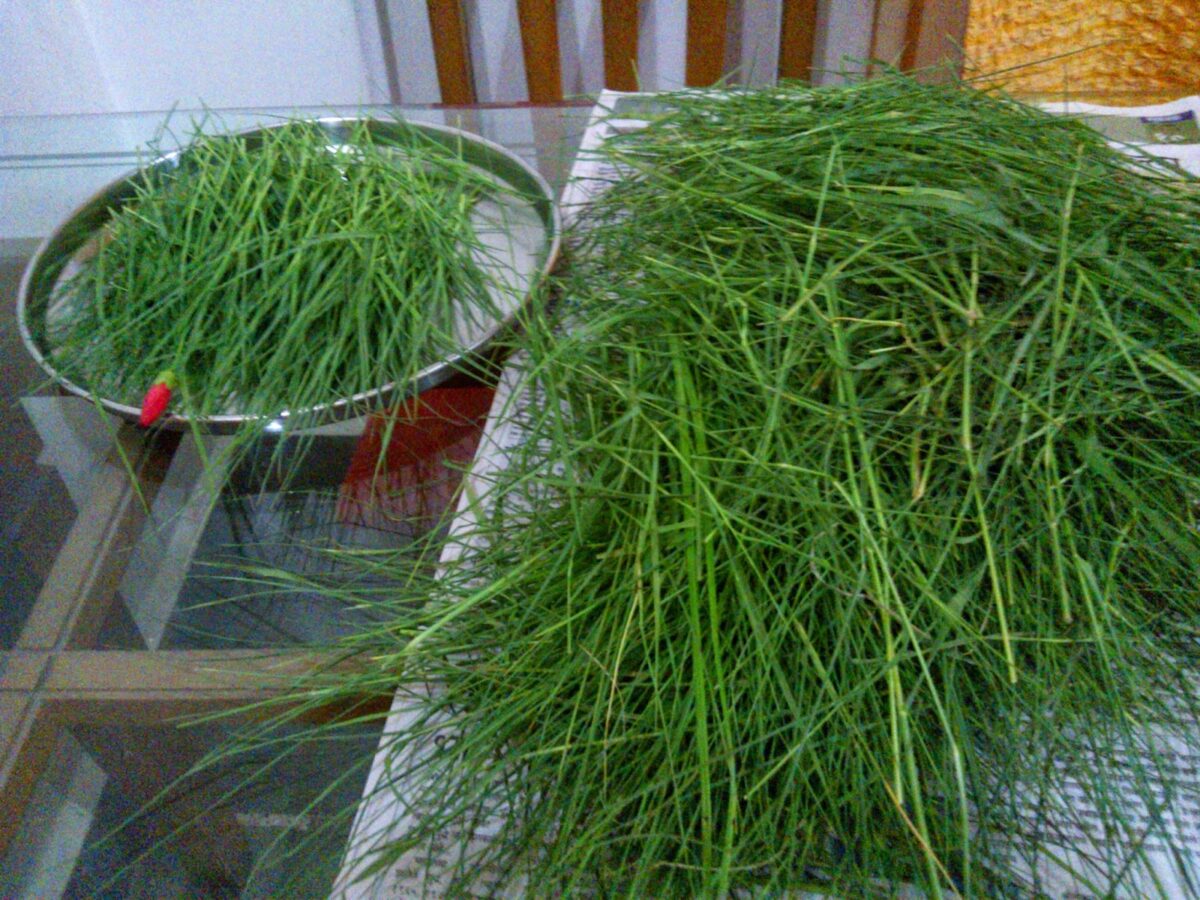 |
| Finally: the small pile of Durva and a big pile of blades of grass |
End result, 16 bunches of 21 Durva each! A time intensive, delicate process but strangely satisfying and enjoyable!
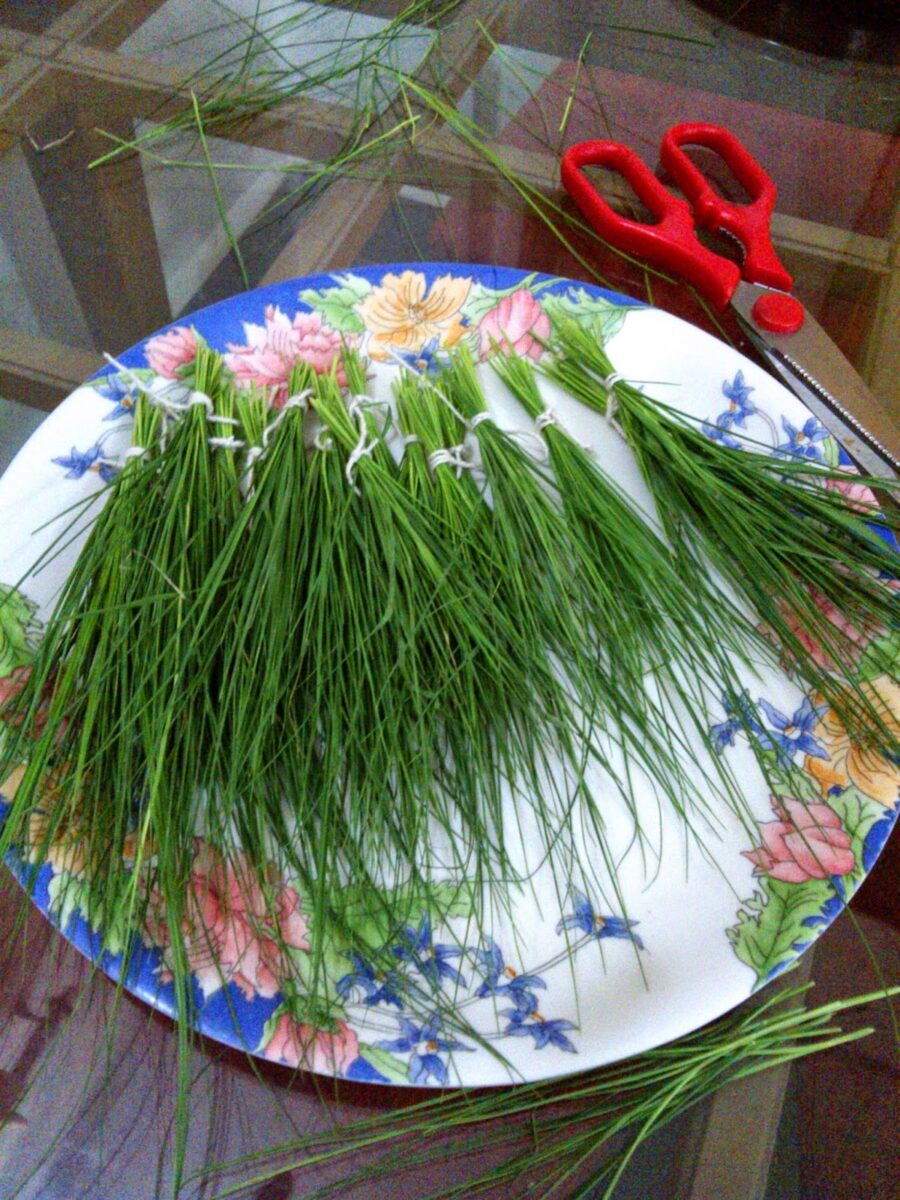 |
| Each bunch has 21 Durva.The string must be firm but not too tight else the delicate stems will break. |
An alternative to this is to get a bunch of pure silver Durva that are available at most jewelers in Pune.
Have a happy, noise-free, eco-friendly Ganesh Ustav!
Here is a link to an article by Devdutt Pattanaik in Times of India about the legends associated with Durva.
Green Glory (Wordless Wednesdays)
Down but not out!
Here is an image captured quite a while ago.
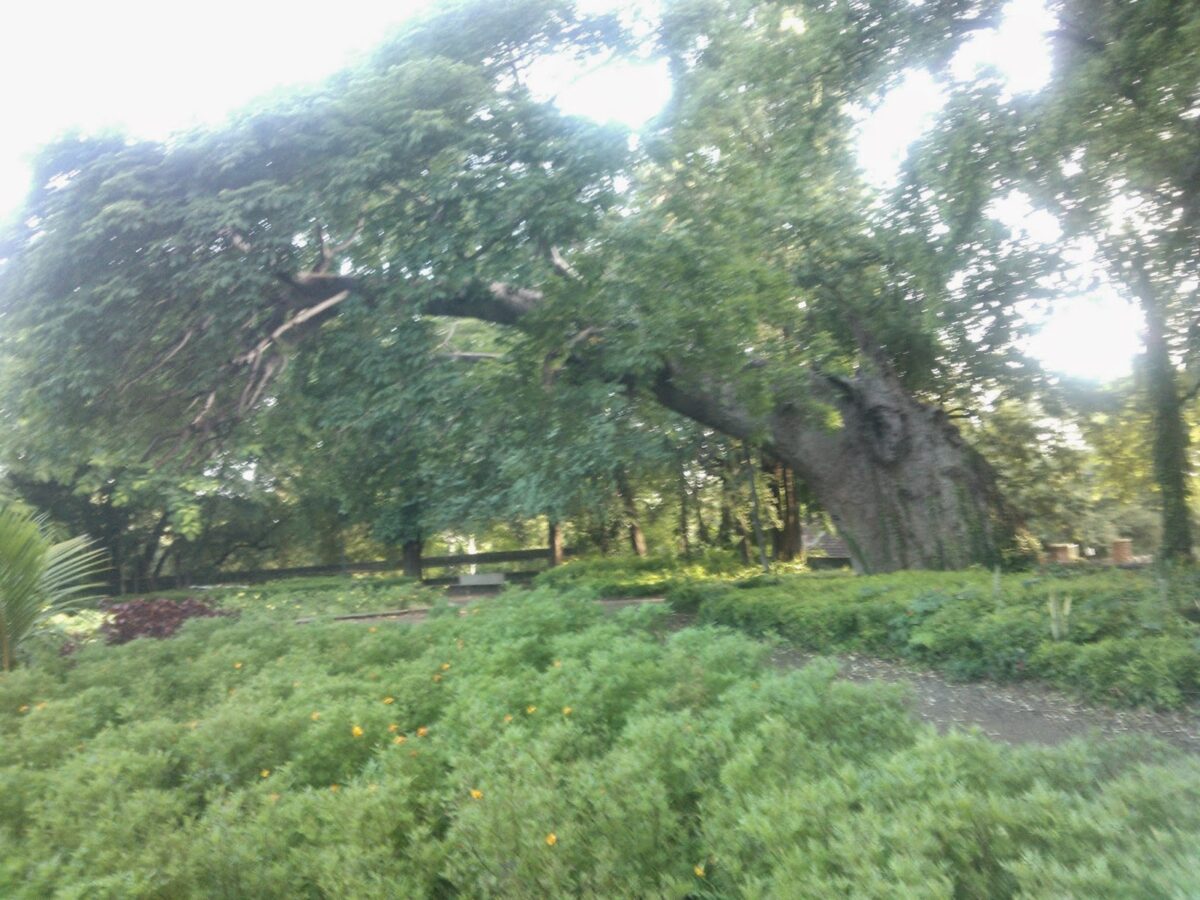
As you can see the tree has bent down considerably as it is weakened on one side due to the infestation. However incessant heavy rain in the monsoon of 2014 caused it to bend down and collapse completely. Here is picture of a newspaper report about the same.
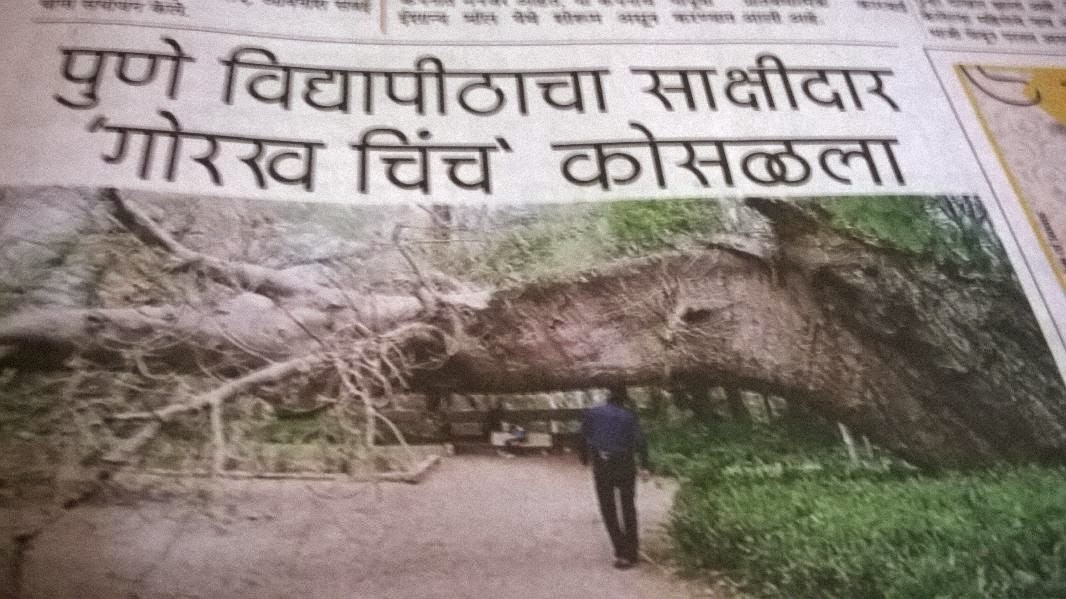 |
| Report in a Pune daily about the fallen tree |
I was quite saddened but really there is not much one can do at an individual level. (Does that sound like an excuse?) Anyway… I happened to visit the University recently and to my utter joy, the tree is still alive. I saw healthy shoots and sprouts at many branches though the tree is horizontal.
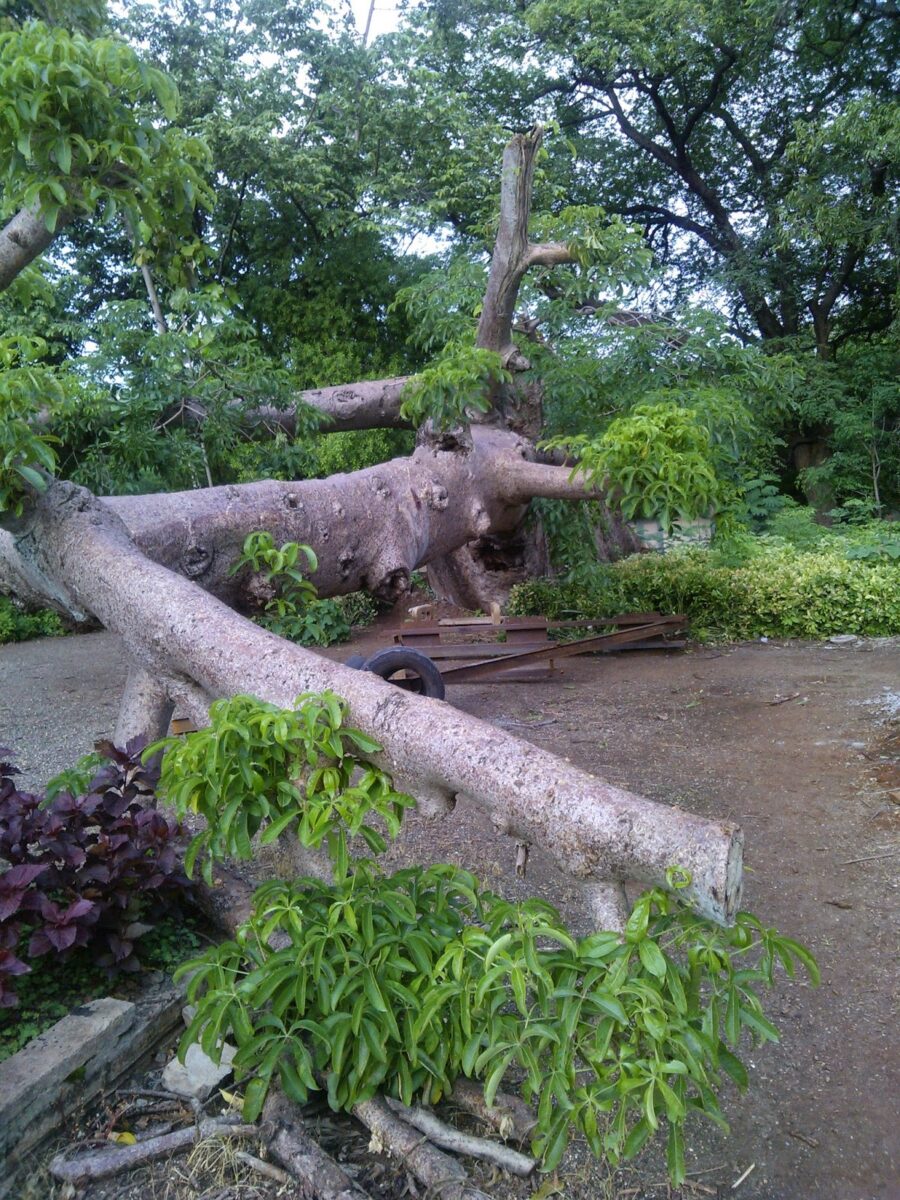 |
| The Boabab has fresh new shoots! |
There is always hope!
Cheers!
Potholed Wonders
I admit I too had not done much ‘sight seeing’ of significant places close to my city, or indeed in the city itself. Something that I have been consciously working to overcome over the last year or so. This post is about one such wonderful place that I visited recently.
Potholes usually evoke images of roads riddled with holes and pits with traffic mayhem all around. So when I read about possibly several hundred years old naturally formed potholes near Pune which are geological wonders themselves I just had to go there…
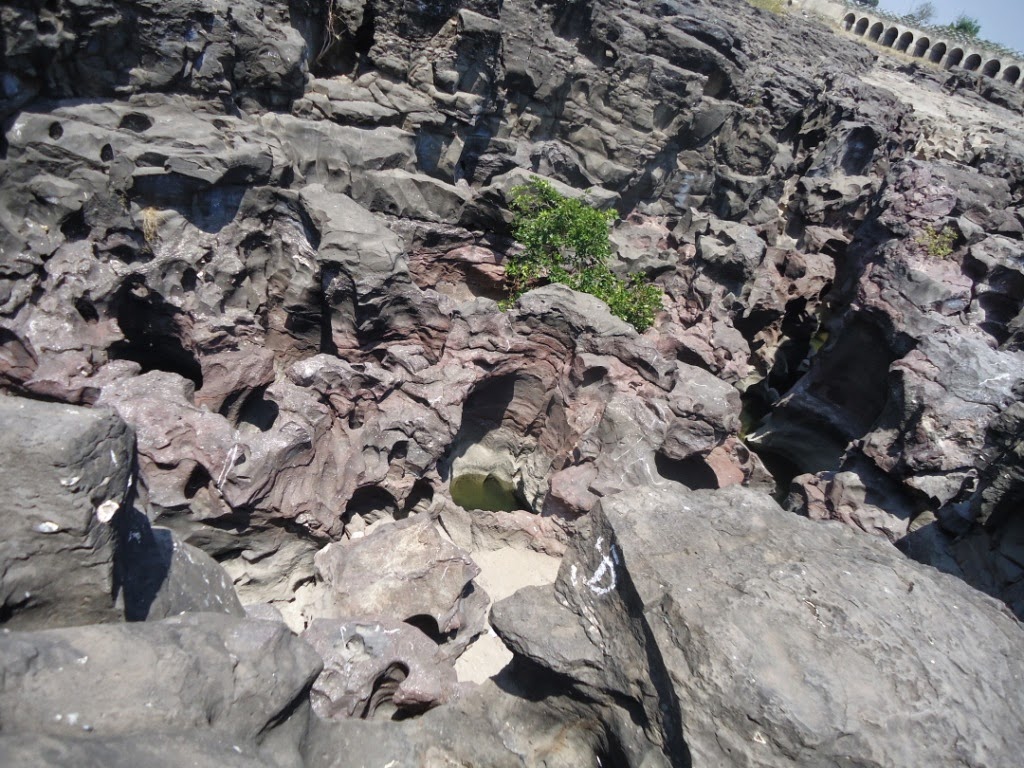 |
| Natural potholes seen near Pune |
These are at a place called Nighoj about a couple of hours drive (approx 90kms) from Pune. The road is excellent except the last part when one has to lurch across the country roads to actually reach the river bed. We are going to see potholes remember?? Jokes apart, these are formations in the bed of the River Kukdi. The irregular jagged ‘holes’ or craters seem like a canyon and open up suddenly as one trudges along the hot rocky river bed. Despite seeing some amazing photographs in a magazine, the sight took my breath away.
These potholes are formed in the layered basalt rock of the river bed and extend for quite some distance and were about 25 feet wide and deep where we stood. The depth may be more in other parts according to reports. Being the peak of summer, the river had hardly any water, thanks also to the dam that is built on it. This showcased the full glory of the potholes and made them easily accessible as well.
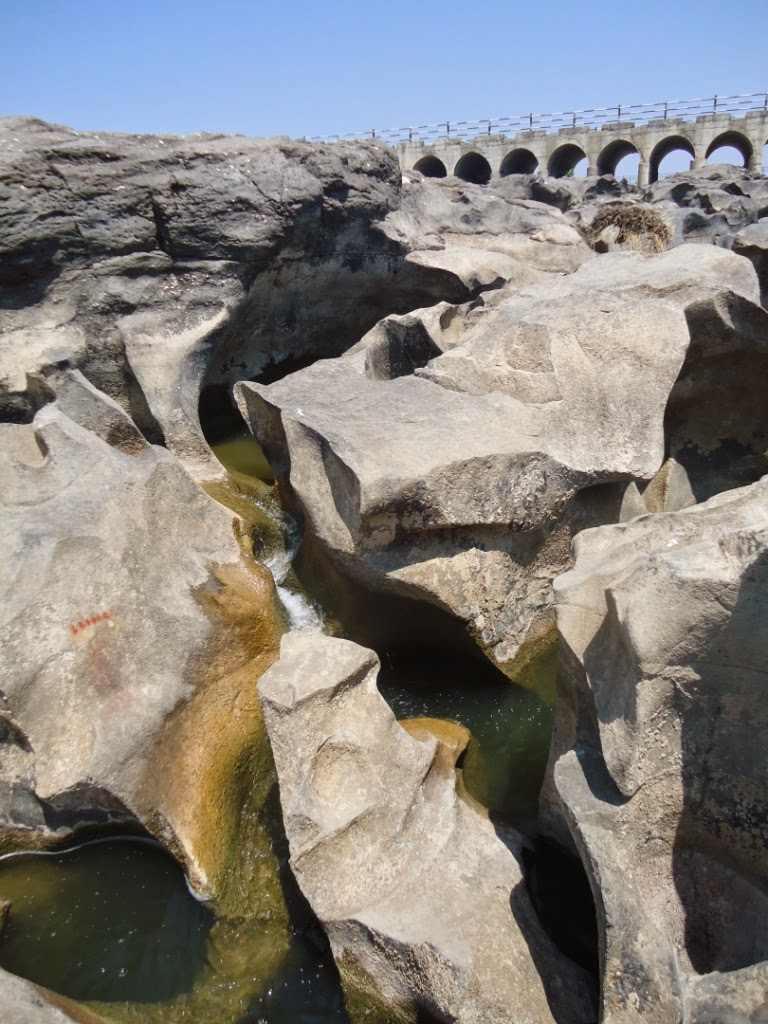 |
| Dam wall visible in the distance |
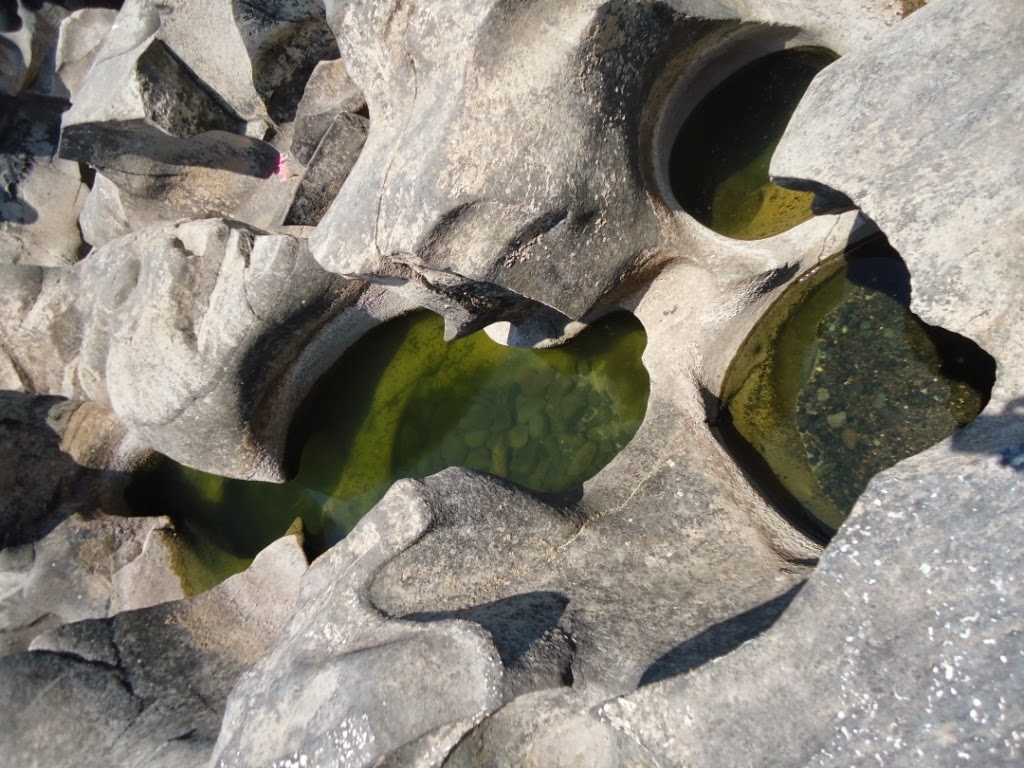 |
| The holes are shaped like a pot being wider in the centre |
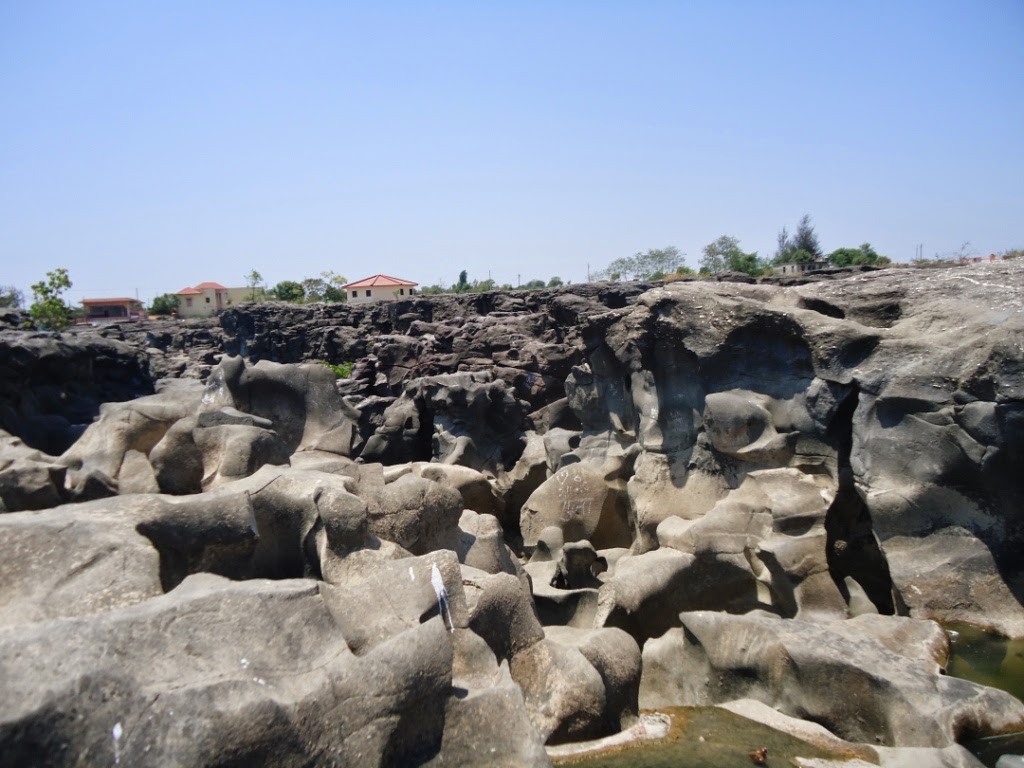
A huge plus was that the river bed was very clean. There were a couple of temples on both sides of the river and a Laman Jhoola built across it. One can see the potholes slowly end and the river bed gets the usual flat appearance downstream.
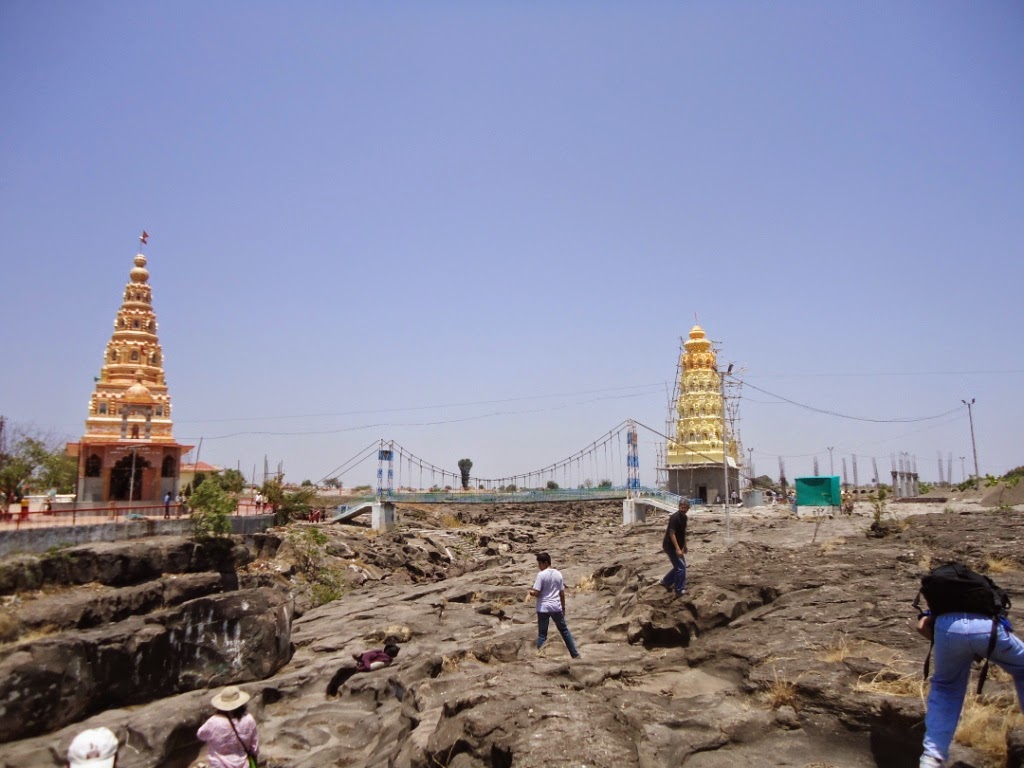 |
| Temples and Laxman Jhoola |
The area is home to the uncommon Capparis decidua. En route one passes several pomegranate fields as well as onion fields enroute where the harvested onions are stored in makeshift huts called ‘Kandyachee chaal’ कांद्याची चाळ (depending on the season you visit).
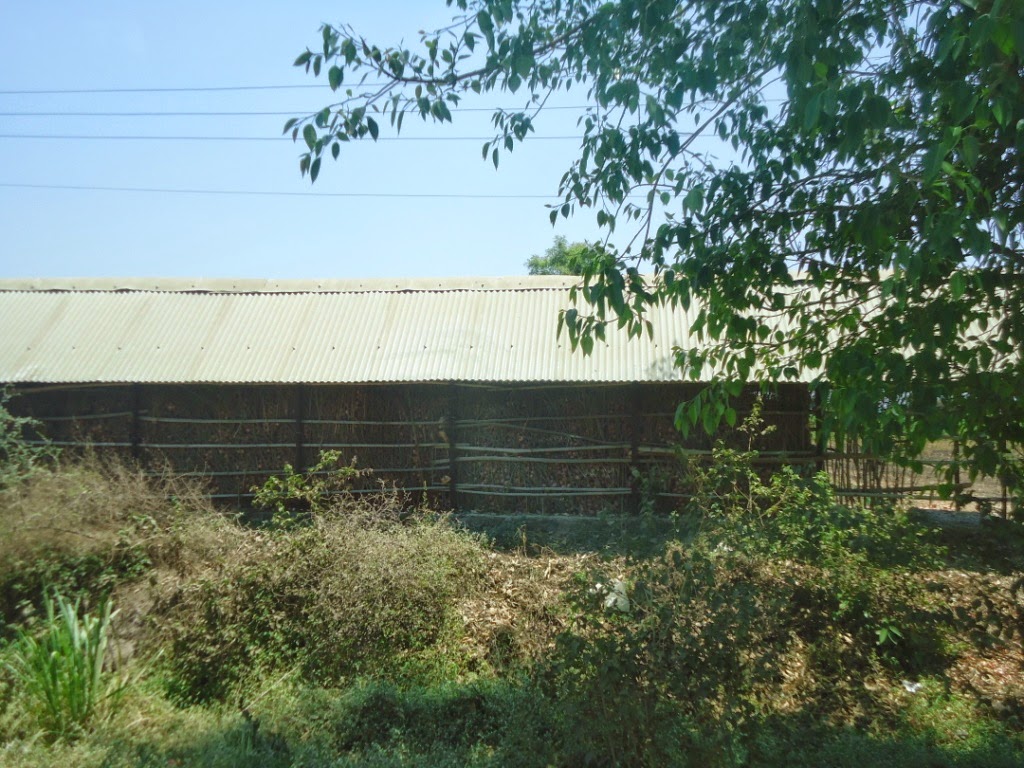 |
| कांद्याची चाळ |
We were very lucky to see a colony of Swifts. It was a beautiful sight to see the birds feed their young ones. A binocular is a must!! Their nests are washed away every time the river fills up and they rebuild them again the next year. Tip: Keep utter silence so as the birds are not scared off.
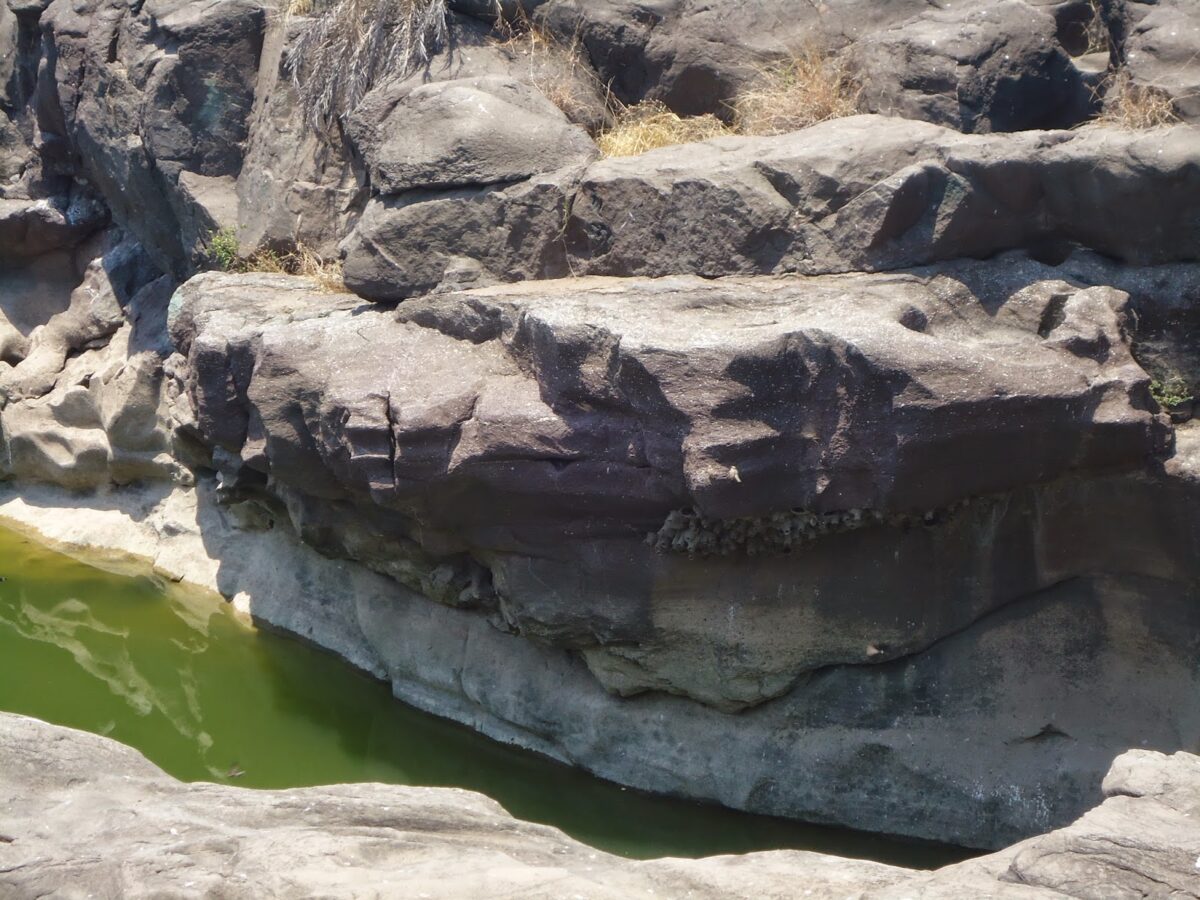 |
| Colony of Swifts |
If you are in Pune with half a day to spare do visit this amazing place.The famous Ranjangaon Mahaganapati Temple is located close by on the main Nagar Road and can be easily added to to the itinerary.
🙂
Happy travelling!
